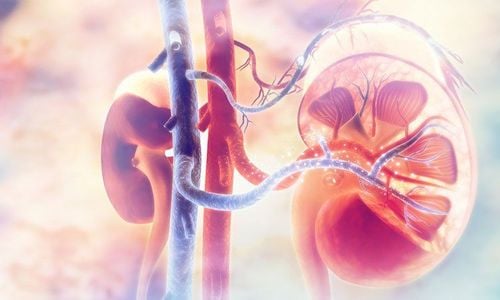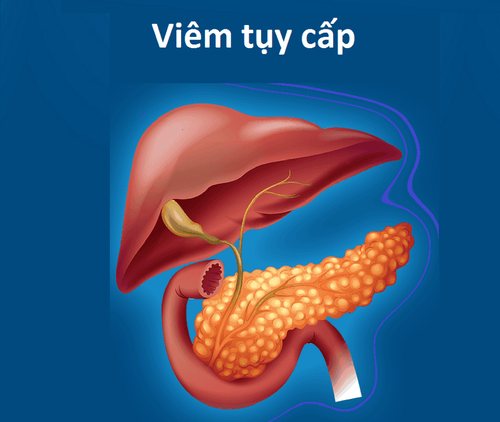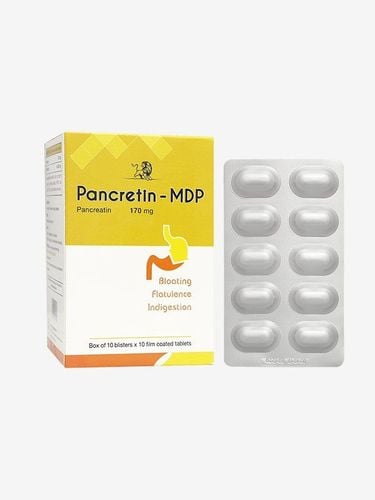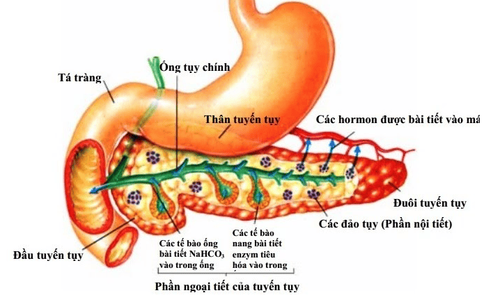This is an automatically translated article.
The article is professionally consulted by MSc, BS. Dang Manh Cuong - Radiologist - Radiology Department - Vinmec Central Park International General Hospital. The doctor has over 18 years of experience in the field of ultrasound - diagnostic imaging.1. What is Pancreatic Ultrasound?
The pancreas is an organ located deep in the abdomen, in front of the spine and behind the peritoneum. The pancreas has an exocrine function that produces and secretes pancreatic juices to aid in the digestion of food, and to help regulate sugar metabolism and a number of other related processes. To examine the condition of the pancreas, ultrasound of the pancreas has become an important method in the evaluation of pancreatic conditions and pathologies.Although ultrasound of the pancreas is an effective method to help identify pancreatic diseases, but because the pancreas is located retroperitoneally, its small size, it is hidden by gas in the stomach and colon, and people may have fatty organs. There will be some difficulties during the ultrasound.
2. When is an ultrasound of the pancreas needed?
There are no mandatory indications to perform pancreatic ultrasound, but if you see the following clinical symptoms, you should go for a pancreatic ultrasound, specifically:Abdominal pain: If you suffer from frequent repeated abdominal pain many times, especially pain after meals, then the symptoms develop into epigastric pain and spread to the lower ribs or lower back.

3. Some diseases can be detected by ultrasound of the pancreas
When pancreatic ultrasound can detect or aid in the detection of a number of pancreatic pathologies, such as:Acute pancreatitis: Pancreatitis is often ordered to look for primary or secondary involvement. On ultrasound of the pancreas, diffuse enlargement of the gland can be seen, generalized hypoechoicity, presence of small amounts of fluid near the pancreas, etc. Pancreatic pseudocyst: Pancreatic pseudocyst usually contains sediments or irregular walls due to necrosis. tissue death or bleeding. The more echogenic components inside the pancreas, the greater the chance of bacterial superinfection. Pancreatic pseudocysts can be detected by color ultrasound or Doppler spectroscopy. Acute and chronic pancreatitis: Recurrent acute pancreatitis provides a favorable opportunity to detect the sonographic signs of chronic pancreatitis. On ultrasonography, irregular hyperechoic areas of fibrosis or calcification are observed. Echogenicity in chronic pancreatitis is often patchy and heterogeneous. Calcification and fibrosis can form a mass of inflammatory tissue and block the common bile duct and pancreatic duct.
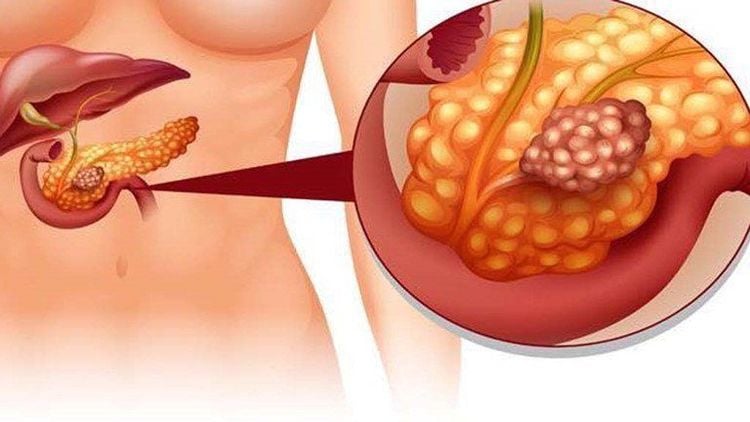
4. Pancreatic ultrasound technique
Before the ultrasound scan of the pancreas, the patient needs to fast for 6-8 hours, and it is best to do the ultrasound in the morning because the food will be digested after waking up, making the ultrasound image more accurate. In addition, the patient should also drink plenty of water about 1 hour before the ultrasound, wear loose clothes.
Step 1: Instruct the patient to lie on their back, with both arms raised above the head and legs extended. Exposing the abdomen from the tip of the breastbone to the pubic joint, relax naturally. Step 2: Ask about the patient's symptoms and medical history and apply the gel to the abdomen Step 3: During the ultrasound of the pancreas, the patient may be asked to lie on the right side, left side or on the stomach , in combination with inhalation, breathing according to the doctor's instructions to better visualize the pancreas during pancreatic ultrasound. Pancreatic ultrasound is a way to help detect and diagnose some pancreatic diseases quickly and effectively. If you suspect you have pancreatic disease, you can come to Vinmec International General Hospital System. This is one of the leading prestigious hospitals in the country, Vinmec uses the most modern generations of color ultrasound machines today in examining and treating patients. One of them is GE Healthcarecar's Logig E9 ultrasound machine with full options, HD resolution probes for clear images, accurate assessment of lesions. In addition, a team of experienced doctors and nurses will greatly assist in diagnosing and early detection of abnormal signs of the body in order to provide timely treatment for pancreatic diseases.
Please dial HOTLINE for more information or register for an appointment HERE. Download MyVinmec app to make appointments faster and to manage your bookings easily.





